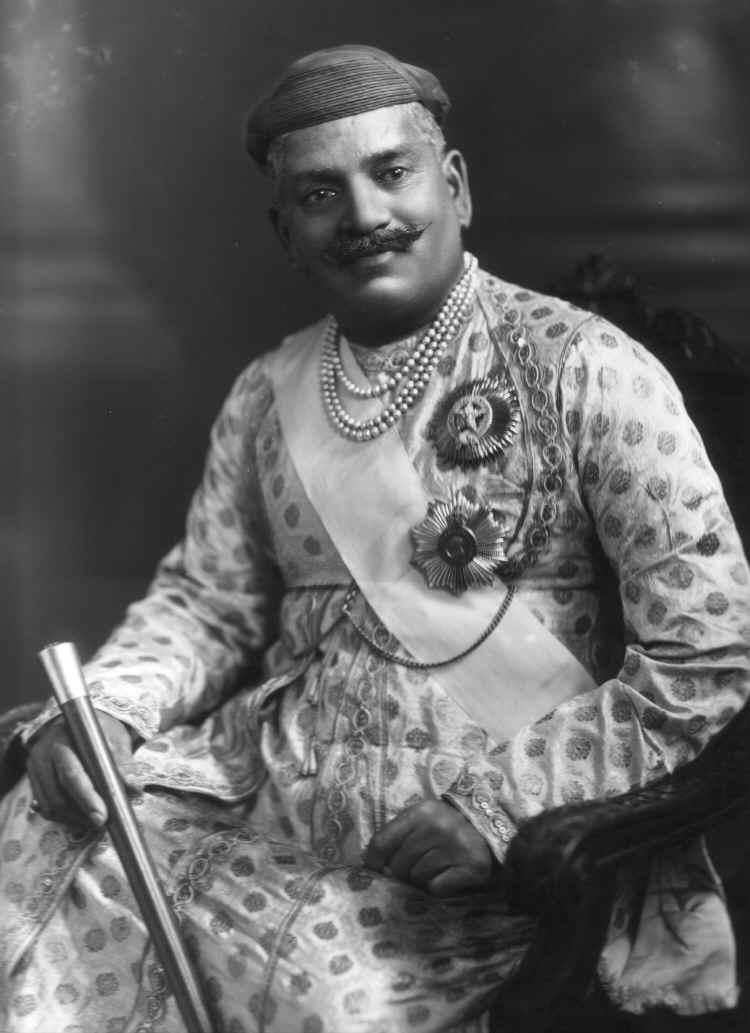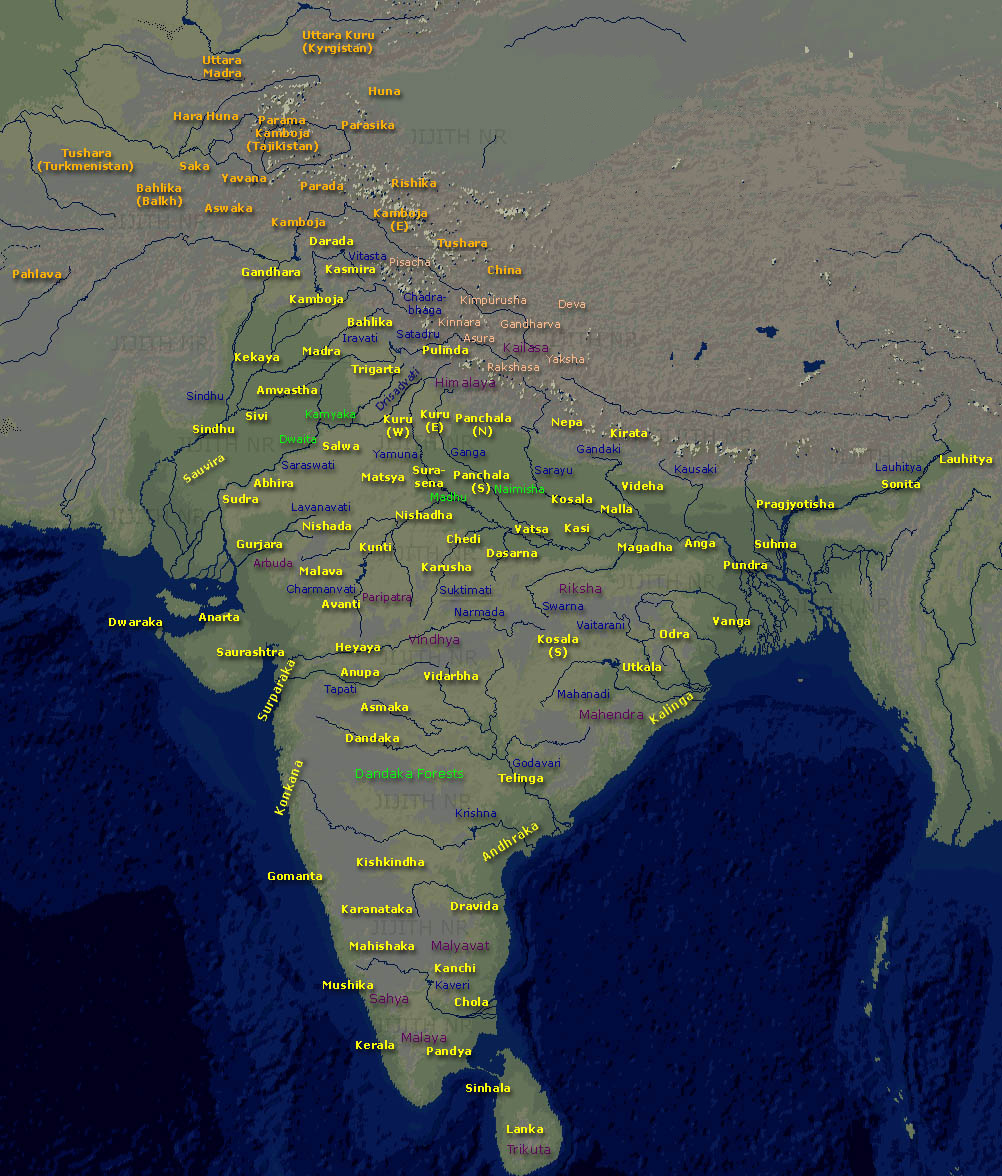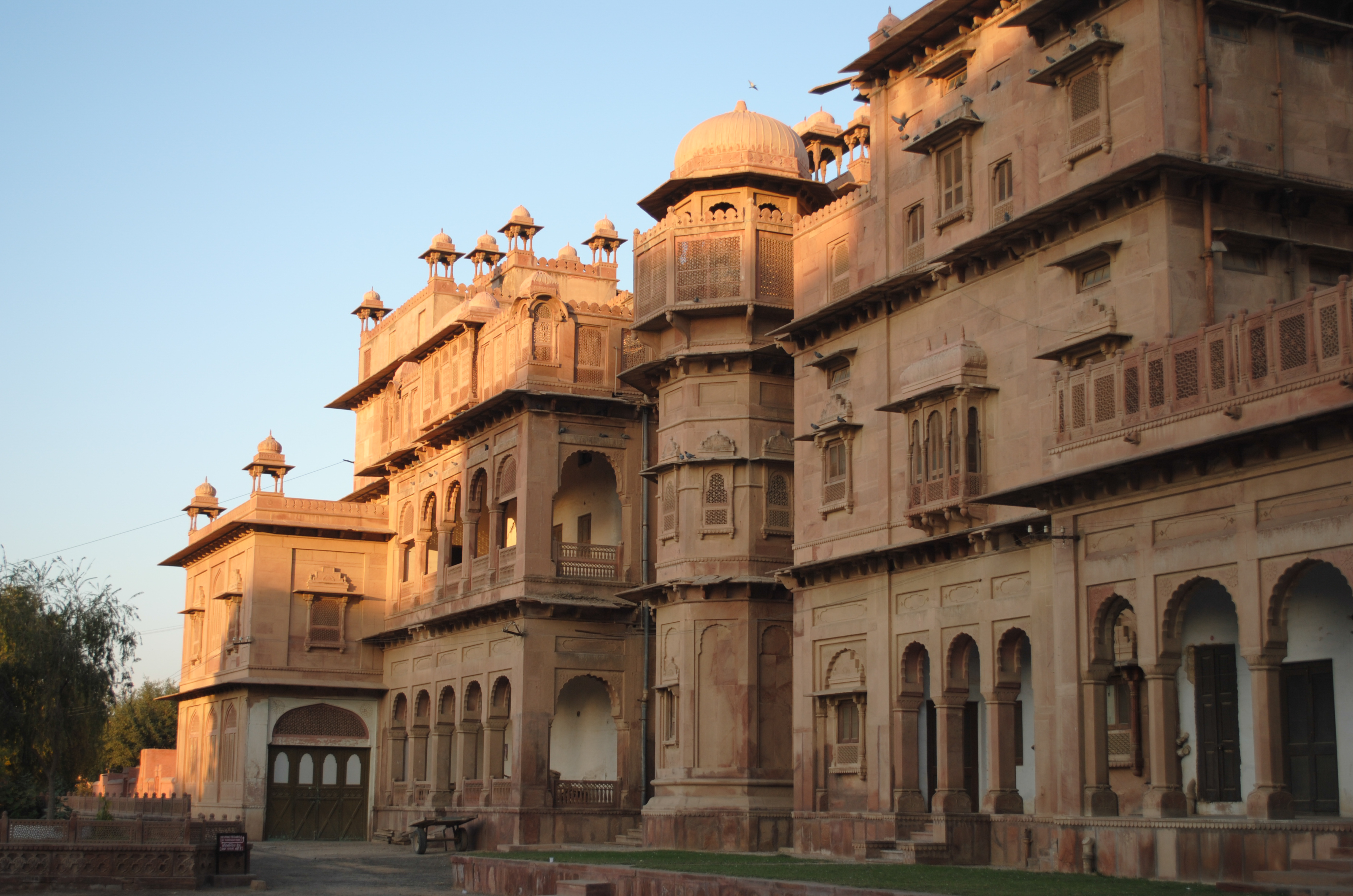|
Jalia Devani
Jalia Devani (Hindi जलिया देवानी) is a former Hindu Rajput non-salute princely state on Saurashtra peninsula, in Gujarat, western India. History The princely state, in Halar prant, was ruled by Jadeja Rajputs. It comprised 10 villages, covering 36 square miles (93 km²), with a population of 2,444 in 1901 (2,688 in 1921), yielding 16,230 Rupees state revenue (1903-4, mostly from land; later 17.000), paying 1,525 Rupees tribute to the Gaekwar Baroda State. During the British Raj, it was a Fifth Class state, in the charge of the colonial Eastern Kathiawar Agency. The Jurisdictional competence of the Taluka were limited in civil cases to 5,000 Rupees, in criminal matters to two years of rigorous imprisonment and fines up to 2,000 Rupees. It ceased to exist on 15 February 1948 by accession to Saurashtra State (later merged into Bombay State, now part of Gujarat). Ruling Thakore Sahebs Succession was by primogeniture Primogeniture ( ) is the ri ... [...More Info...] [...Related Items...] OR: [Wikipedia] [Google] [Baidu] |
Princely State
A princely state (also called native state or Indian state) was a nominally sovereign entity of the British Indian Empire that was not directly governed by the British, but rather by an Indian ruler under a form of indirect rule, subject to a subsidiary alliance and the suzerainty or paramountcy of the British crown. There were officially 565 princely states when India and Pakistan became independent in 1947, but the great majority had contracted with the viceroy to provide public services and tax collection. Only 21 had actual state governments, and only four were large ( Hyderabad State, Mysore State, Jammu and Kashmir State, and Baroda State). They acceded to one of the two new independent nations between 1947 and 1949. All the princes were eventually pensioned off. At the time of the British withdrawal, 565 princely states were officially recognised in the Indian subcontinent, apart from thousands of zamindari estates and jagirs. In 1947, princely states covered ... [...More Info...] [...Related Items...] OR: [Wikipedia] [Google] [Baidu] |
British Raj
The British Raj (; from Hindi language, Hindi ''rāj'': kingdom, realm, state, or empire) was the rule of the British The Crown, Crown on the Indian subcontinent; * * it is also called Crown rule in India, * * * * or Direct rule in India, * Quote: "Mill, who was himself employed by the British East India company from the age of seventeen until the British government assumed direct rule over India in 1858." * * and lasted from 1858 to 1947. * * The region under British control was commonly called India in contemporaneous usage and included areas directly administered by the United Kingdom of Great Britain and Ireland, United Kingdom, which were collectively called Presidencies and provinces of British India, British India, and areas ruled by indigenous rulers, but under British British paramountcy, paramountcy, called the princely states. The region was sometimes called the Indian Empire, though not officially. As ''India'', it was a founding member of the League of Nations, a ... [...More Info...] [...Related Items...] OR: [Wikipedia] [Google] [Baidu] |
Thakore Saheb
Thakur is a historical feudal title of the Indian subcontinent. It is also used as a surname in the present day. The female variant of the title is Thakurani or Thakurain, and is also used to describe the wife of a Thakur. There are varying opinions among scholars about its origin. Some scholars suggest that it is not mentioned in the Sanskrit texts preceding 500 BCE, but speculates that it might have been a part of the vocabulary of the dialects spoken in northern India before the Gupta Empire. It is viewed to have been derived from word ''Thakkura'' which, according to several scholars, was not an original word of the Sanskrit language but a borrowed word in the Indian lexis from the Tukhara regions of Inner Asia. Another view-point is that ''Thakkura'' is a loan word from the Prakrit language. Scholars have suggested differing meanings for the word, i.e. "god", "lord", and "master of the estate". Academics have suggested that it was only a title, and in itself, di ... [...More Info...] [...Related Items...] OR: [Wikipedia] [Google] [Baidu] |
Primogeniture
Primogeniture ( ) is the right, by law or custom, of the firstborn legitimate child to inheritance, inherit the parent's entire or main estate (law), estate in preference to shared inheritance among all or some children, any illegitimate child or any collateral relative. In most contexts, it means the inheritance of the firstborn son (agnatic primogeniture); it can also mean by the firstborn daughter (matrilineal primogeniture). Description The common definition given is also known as male-line primogeniture, the classical form popular in European jurisdictions among others until into the 20th century. In the absence of male-line offspring, variations were expounded to entitle a daughter or a brother or, in the absence of either, to another collateral relative, in a specified order (e.g. male-preference primogeniture, Salic primogeniture, semi-Salic primogeniture). Variations have tempered the traditional, sole-beneficiary, right (such as French appanage) or, in the West since ... [...More Info...] [...Related Items...] OR: [Wikipedia] [Google] [Baidu] |
Bombay State
Bombay State was a large Indian state created at the time of India's Independence, with other regions being added to it in the succeeding years. Bombay Presidency (roughly equating to the present-day Indian state of Maharashtra, excluding South Maharashtra and Vidarbha) was merged with the princely states of Baroda, Western India and Gujarat (the present-day Indian state of Gujarat) and the Deccan States (which included parts of the present-day Indian states of Maharashtra and Karnataka). On 1 November 1956, Bombay State was re-organized under the States Reorganisation Act on linguistic lines, absorbing various territories including the Saurashtra and Kutch States, which ceased to exist. On 1 May 1960, Bombay State was dissolved and split on linguistic lines into the two states of Gujarat, with Gujarati speaking population and Maharashtra, with Marathi speaking population. History During the British Raj, portions of the western coast of India under direct British r ... [...More Info...] [...Related Items...] OR: [Wikipedia] [Google] [Baidu] |
Saurashtra State
Saurashtra, also known as United State of Kathiawar, was a State of India that existed between 1948 and 1956, on Saurashtra alias Kathiawar peninsula, with Rajkot as its capital, History Formation as United State of Kathiawar Saurashtra State was originally named the United State of Kathiawar. It was formed on 15 February 1948, from approximately 200 large and small Princely States of the colonial Baroda, Western India and Gujarat States Agency of the British raj territory under direct colonial rule. The name of State was given after the Kathiawar and Saurashtra region, both of which generally denote the same geographical region of lands on the main peninsula of Gujarat. The persuasions of Sardar Vallabhbhai Patel and the influence of Mahatma Gandhi are credited for persuading most of the States of Kathiawar to join the Union of India and sign the Instrument of Accession. Patel met and managed to convince the local princes and petty subas, totaling 222 in Saurashtra re ... [...More Info...] [...Related Items...] OR: [Wikipedia] [Google] [Baidu] |
Taluka
A tehsil (, also known as tahsil, taluka, or taluk) is a local unit of administrative division in some countries of South Asia. It is a subdistrict of the area within a district including the designated populated place that serves as its administrative centre, with possible additional towns, and usually a number of villages. The terms in India have replaced earlier terms, such as '' pargana'' ('' pergunnah'') and '' thana''. In Andhra Pradesh and Telangana, a newer unit called mandal (circle) has come to replace the system of tehsils. It is generally smaller than a tehsil, and is meant for facilitating local self-government in the panchayat system. In West Bengal, Bihar, Jharkhand, community development blocks are the empowered grassroots administrative unit, replacing tehsils. As an entity of local government, the tehsil office ( panchayat samiti) exercises certain fiscal and administrative power over the villages and municipalities within its jurisdiction. It is the ultimate e ... [...More Info...] [...Related Items...] OR: [Wikipedia] [Google] [Baidu] |
Eastern Kathiawar Agency
The Baroda, Western India and Gujarat States Agency was an agency of the Indian Empire, managing the relations of the Provincial Government of the Bombay Presidency with a collection of princely states. The political agent in charge of the agency resided at Baroda (Vadodara). History In 1937 the princely states of the Baroda Agency were merged with those of the agencies adjacent to the northern part of the Bombay Presidency, Rewa Kantha Agency, Surat Agency, Nasik Agency, Kaira Agency and Thana Agency, in order to form the Baroda and Gujarat States Agency. On 5 November 1944 the Baroda and Gujarat States Agency was merged with the Western India States Agency (WISA) to form the larger Baroda, Western India and Gujarat States Agency. After the Independence of India in 1947, as India and Pakistan, the rulers of the princely states of the agency signed the Instrument of Accession and joined India. Only a few princely states such as Junagadh and (Bantva) Manavadar linge ... [...More Info...] [...Related Items...] OR: [Wikipedia] [Google] [Baidu] |
Baroda State
Baroda State was a state in present-day Gujarat, ruled by the Gaekwad dynasty of the Maratha Confederacy from its formation in 1721 until its Instrument of Accession, accession to the newly formed Dominion of India in 1949. With the city of Baroda (Vadodara) as its capital, during the British Raj its relations with the British were managed by the Baroda Residency. The revenue of the state in 1901 was Rs. 13,661,000. Baroda formally acceded to the Dominion of India, on 1 May 1949, prior to which an interim government was formed in the state. History Early history Baroda derives its native name ''Vadodara'' from the Sanskrit word ''vatodara'', meaning 'in the heart of the Banyan (''Vata'') tree. It also has another name, ''Virakshetra'' or ''Virawati'' (land of warriors), mentioned alongside ''Vadodara'' by the 17th century Gujarati poet Premanand Bhatt, native to the city. Its name has been mentioned as ''Brodera'' by early English travellers and merchants, from which its ... [...More Info...] [...Related Items...] OR: [Wikipedia] [Google] [Baidu] |
Saurashtra (region)
Saurashtra, also known as Sorath or Kathiawar, is a peninsular region of Gujarat, India, located on the Arabian Sea coast. It covers about a third of Gujarat state, notably 11 districts of Gujarat, including Rajkot District. It was formerly a state of India before it merged with Bombay state. In 1961 it separated from Bombay and joined Gujarat. Location Saurashtra peninsula is bound on the south and south-west by the Arabian sea, on the north-west by the Gulf of Kutch and on the east by the Gulf of Khambhat. From the apex of these two gulfs, the Little Rann of Kutch and Khambhat, waste tracts half salt morass half sandy desert, stretch inland towards each other and complete the isolation of Kathiawar, except one narrow neck which connects it on the north-east with the mainland of Gujarat. The peninsula is sometimes referred to as Kathiawar after the Kathi Darbar, which once ruled most of the region. However, Saurashtra is not entirely synonymous with Kathiawar, since a ... [...More Info...] [...Related Items...] OR: [Wikipedia] [Google] [Baidu] |
Rajput
Rajput (from Sanskrit ''raja-putra'' 'son of a king') is a large multi-component cluster of castes, kin bodies, and local groups, sharing social status and ideology of genealogical descent originating from the Indian subcontinent. The term Rajput covers various patrilineal clans historically associated with warriorhood: several clans claim Rajput status, although not all claims are universally accepted. According to modern scholars, almost all Rajput clans originated from peasant or pastoral communities. Over time, the Rajputs emerged as a social class comprising people from a variety of ethnic and geographical backgrounds. During the 16th and 17th centuries, the membership of this class became largely hereditary, although new claims to Rajput status continued to be made in the later centuries. Several Rajput-ruled kingdoms played a significant role in many regions of central and northern India from seventh century onwards. The Rajput population and the former Rajput state ... [...More Info...] [...Related Items...] OR: [Wikipedia] [Google] [Baidu] |
Jadeja
The Jadeja (also spelled Jarejo) ( Gujarati: ) is a Rajput clan that inhabits the Indian state of Gujarat. They claim to be descended from the legendary Jamshed of Iran. They also claim descent from Krishna. They originated from pastoral communities and laid a claim on the Rajput identity after marriages with Sodha Rajput women by adopting a process called Rajputisation. History Oral sources place the emergence of the Jadejas as being in the late 9th century when kingdoms were established in parts of Kutch and Saurashtra by Lakho Ghuraro and Lakho Phulani who in turn were descendents of Jam Jada, the progenitor of the clan. However, available written sources place the emergence of the Jadejas in the 14th century. After the Arab conquest of Sindh, various migrant communities from Sindh (Pakistan), as well as Arab merchants settled in Kutch (India). Historian Anisha Saxena suggests that the Jadejas were Hindu branches of the Samma dynasty of Sindh whose leaders, like other Samm ... [...More Info...] [...Related Items...] OR: [Wikipedia] [Google] [Baidu] |







